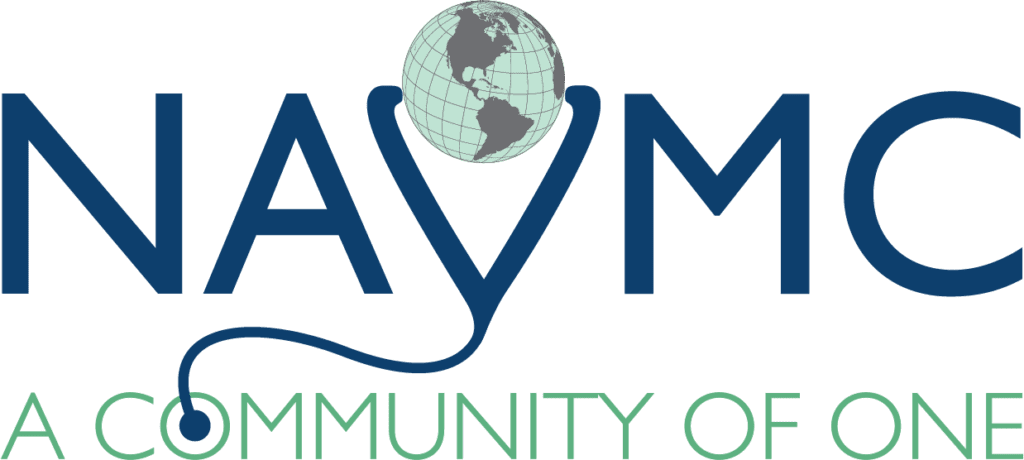Bolivia
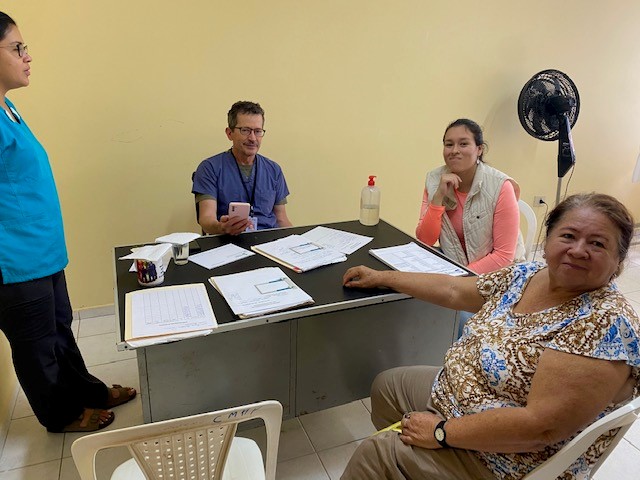
30 May
BOLIVIA TRIP SUMMARY – MAY 6-13, 2023
We had an absolutely amazing trip to Bolivia. This was the trip intended to check on our supplies, negotiate terms with the hospital, see patients in clinic, and reconnect with everyone down there that make our trips possible. All goals were achieved and exceeded. The team consisted of Drs. Andy Aldridge, Phil Williams, Brian Balanoff and me. The small team made the trip much more relaxing, and we could be more flexible with our schedule. It also really helped the four of us to form meaningful and lasting relationships with those at the Susan Hou Clinic in Palacios and Dr. Douglas Villaroel (our red tape workaround master.) We also got to listen to and speak a lot of Spanish which will serve us well in November. Here are a few of the highlights: We visited and paid our respects to the Espinoza family. Unfortunately, Dr. Espinoza passed from covid while providing care to covid+ patients in July 2020. Dr. Espinoza was a pivotal member of our team in Bolivia. He was a general surgeon who worked in Santa Cruz, but often came out to Portachuelo to work with us. If any complications arose with our patients after we left the country, he would take care of them. We had a very special breakfast with his large family at their home in Santa Cruz and were able to reminisce and share stories. We all feel so fortunate to have known and worked with Dr. Oscar Espinoza. We spent time at the hospital in Portachuelo. This is where we perform our surgeries and where the patients stay before and after surgery. The big news from this trip was that our equipment was all in functioning condition. I negotiated terms with this group for November and was assured prices would remain the same as in 2019. Apparently, inflation has not hit Bolivia like it has the states. We also had the pleasure of visiting Dr. Vargas at his home in Portachuelo. Dr. Vargas is the main doctor at the clinic in Palacios. He helps us select and prepare our surgical candidates before we arrive. My favorite part of the trip was the two days and a night at the Susan Hou Clinic in Palacios. We saw upwards of 80 patients in the clinic, all hoping to have surgery with us in November. We narrowed the list down to 50ish and now we are figuring out the most dire cases and what we can actually accomplish in November. People have been waiting a long time to see us so there were many urgent needs. We had the pleasure of the company of the Bolivian clinic coordinator, Gabriela, and her husband, Marco. While at the clinic we went on a night walk, saw the stars of the Southern Hemisphere (hello Southern Cross!) and ziplined over the rushing river that patients must cross to make it to the clinic from their homes since its bridge washed out. We also visited the newly built library (book donation thanks to NAVMC) and the kids treated us to food and drink. Our last night we had a lovely dinner with Dr. Douglas Villaroel. He is the person responsible for keeping us legal in Bolivia. He takes care of our licensure, credentialing, and helps us to bring all the equipment we need into Bolivia, not an easy feat. He reiterated his continued support for our cause and has already asked for a list of equipment I want to bring in so he can start working on the red tape so common in Bolivia. Dr. Douglas also spoke with us about the washed-out bridge and how it is impacting the community and their access to the clinic. More to come on that. I think it might be a great fundraising opportunity for NAVMC. Those are the highlights of our trip. I cannot explain how wonderful it felt to be back in Bolivia and to see all our friends. It has been over 4 years! We took the perfect small group to re-form strong bonds with everyone who helps us do what we do. With a full team in November, I know we will be able to help a lot of Bolivians and make you all proud. It’s great to get NAVMC back on the ground, accomplishing so much and realizing our mission statement. Thanks for everyone’s support!Amy
READ MORE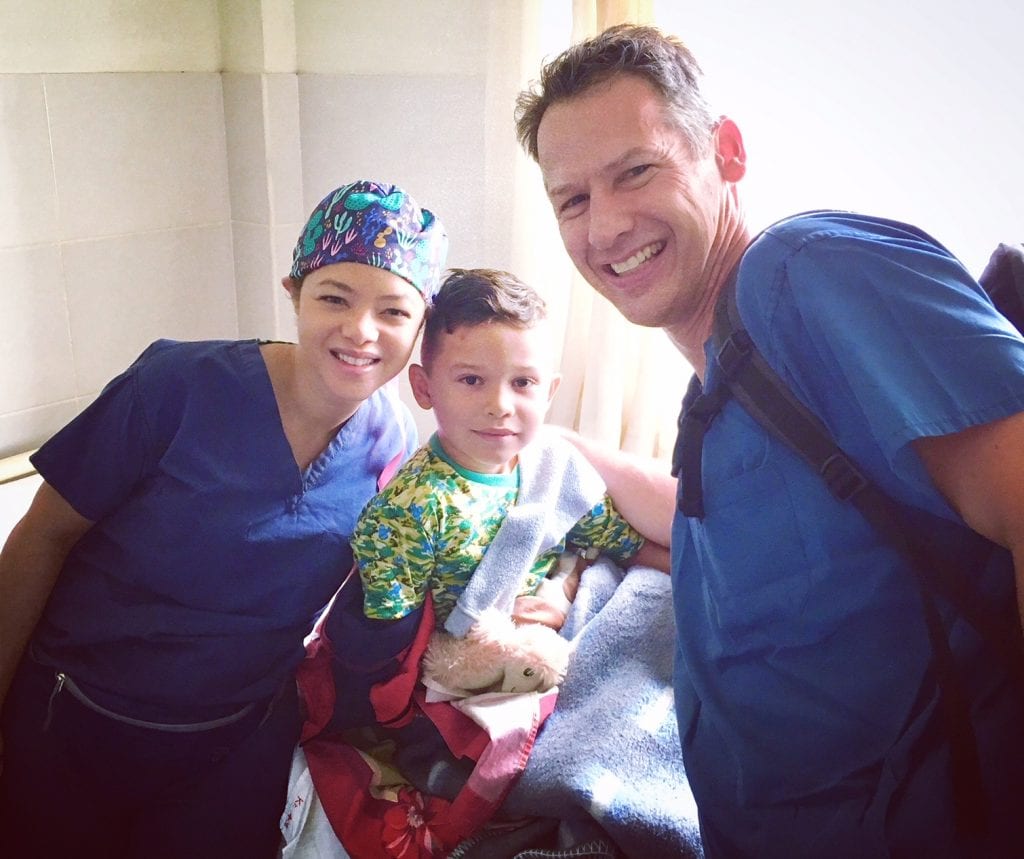
27 November
2018 Bolivia trip
NAVMC took 18 medical professionals to Bolivia the first week of November. The team saw almost 50 people in clinic and booked 36 patients. We performed 40 procedures including many gallbladder removals, hysterectomies, uterine and bladder prolapse repairs, lipoma removals, and hernia repairs. Dr. Andy Aldridge and Dr. Carolina Martinez repaired an inguinal hernia on our youngest patient to date. He is just seven and can go back to playing soccer and running on the playground with his friends, pain free. This was Flagstaff local, Dr. Phil Williams, first year with the campaign and dare I say he is hooked. The women of Bolivia (and the entire team) appreciated his calm demeanor and exceptional surgical skills. This year we also had the honor of Dr. Michael Collier. Michael spent time at the clinic in Palacios and most of the surgical week with us in Portachuelo to document through photographs the work we do. We even got to visit Samaipata, hang out with Dr. Douglas and Bolivian journalists, and celebrated the week’s culmination at Dr. Espinoza’s house. A big shoutout to Ethicon for their continued support with supply donations and Exparel, who helps our patients with pain control in a country with very little to offer in that regard. Thank you to everyone who contributes to this worthy cause with their time, money, and support. It was an incredible trip! Gracias! Amy
READ MORE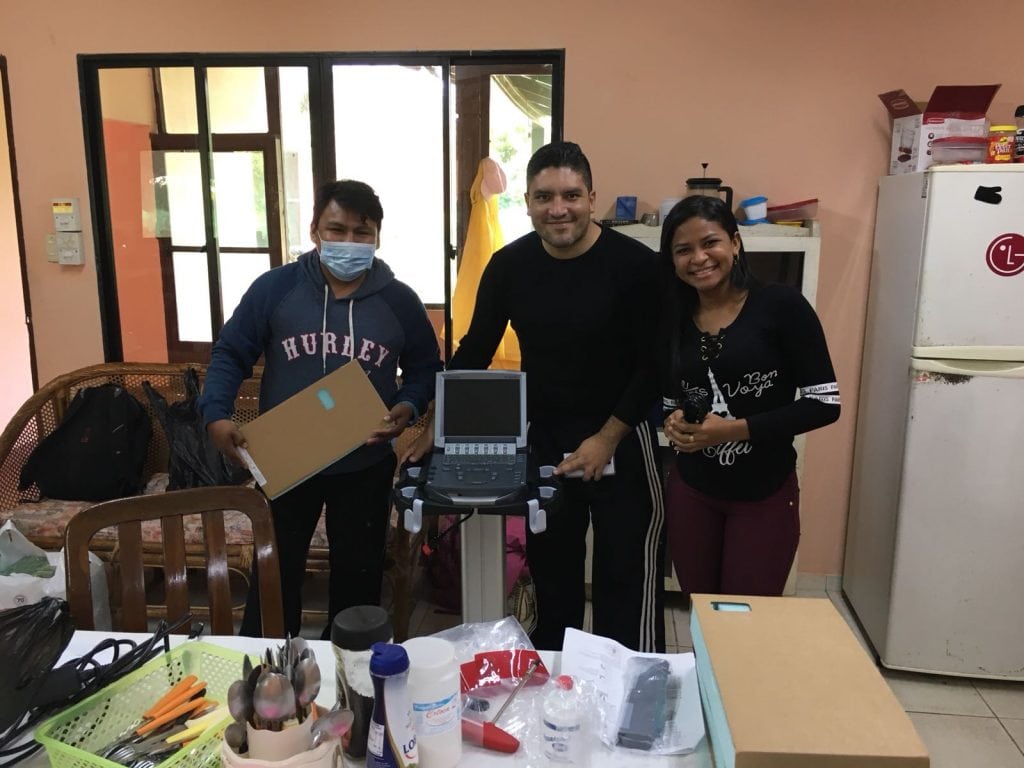
5 July
Ultrasound Machine
In March, NAVMC’s board approved $2500 toward a new ultrasound unit for the clinic in Palacios, Centro Medico Humberto Parra. The unit just arrived and they shared some great photos of the staff posing with it. This ultrasound will not just be used in the care of pregnant women. Ultrasound in Bolivia is used to diagnose many of the ailments we treat like uterine fibroids, cholelithiasis and ovarian cysts. Having a machine in the clinic means our patients will not have to travel great distances to be diagnosed. NAVMC is happy to partner with CMHP to offer better care to our Bolivian patients. Que padre!
READ MORE
31 May
NAVMC Continues to Offer Surgical Aid in Bolivia
Unfortunately, last year we had to turn down a few patients for surgery. One was turned away because his hernia was so large our surgeon did not feel comfortable repairing it with the limited resources offered in Portachuelo. Thanks to a generous American donor NAVMC allocated money toward the surgeries and/or workups for all the patients we were unable to perform surgery on in 2017. Collaborating with the clinic in Palacios and a trusted Bolivian surgeon in Santa Cruz, we have already paid for a patient’s cervical biopsy and hernia surgery. This is an excerpt from the very kind hand-written thank you we received from one of these patients: “I have been blessed with umbilical hernia surgery and am already home recuperating. I want to thank all the people that form part of the group (NAVMC’s surgical campaign.) God willing, there will be more people that receive this level of help because it is very important and necessary for us. At the same time, I am committed to collaborate within my capabilities with you all to help the center (CMHP and surgical campaign) to grow (so it may help others.)” The team is always overwhelmed with the offer of help from those previously touched by our surgical campaign. It is not uncommon for patients from previous years to make the trek to the hospital in Portachuelo on clinic day to thank us in person. Their hugs and gratitude mean the world to us and we always love hearing follow ups on our patients. We hope to send at least two more patients for surgery in Santa Cruz and perform a much needed cardiac work up on another so that she will be ready for surgery when we arrive to Bolivia this November. We hold ourselves to the same standards, whether we are in the US or Bolivia, to always ensure our patients receive the highest quality of care.
READ MORE
10 May
Patient Testimonial
“One day I was working at my kitchen job and I suddenly felt an insurmountable pain in my lower abdomen. The pain was so strong I thought I was going to die. I could not move and I was screaming. They took me to the doctor who told me that if I ever wanted to work again, I would need to get surgery, but there was no way I could afford the surgery. I was getting paid 1,000 Bolivianos a month [about $145 USD) and I used this money to send my child to school and pay for water. I also had a hysterectomy last year, and I took out a huge loan that I still haven’t been able to pay back. My pain from the prolapse was the worst. It felt like fire and like a balloon was coming out of me. Stress would make the pain even worse. I was terrified to be outside in the sun. I am so happy with my surgery. It is incredible the help that comes. In my community, there are so many poor people, even poorer than me. I am the first person from my community to receive treatment through Centro Medico Humberto Parra. There are more people that could really use it. I have thanked God so many times for the team that came and did my surgery, and I hope they return. They were so kind and I healed so quickly. Now I am determined to take care of myself and let myself heal.” Please help us continue our Bolivian surgical campaign. Our patients never owe money for the surgeries we provide.
READ MORE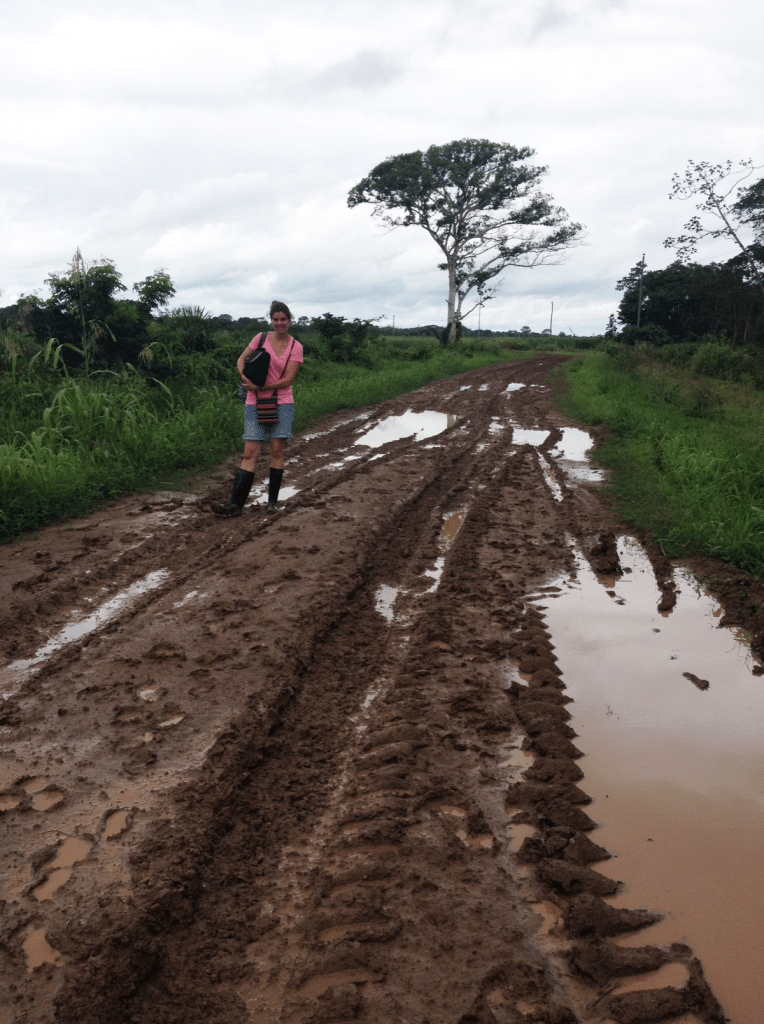
10 May
Shoes
When it rains in Palacios, a small rural community a 30 minute drive from the nearest paved road, everything turns to mud. The roads, which were almost entirely made up of dust the day before, fill up with pools upon pools of water, with the occasional mud pile to remind you of the road that once existed there. Life within the community slows. Motorcycles, the main form of transportation, cannot pass the roads. Cars slip and slide until they end up in a ditch on either side of the road, waiting for a tractor to pull them out. Commuting becomes near impossible. It was on a road such as this that my sister and I were carefully navigating our SUV. We had just finished seeing patients for clinic in a community member’s house and were returning to the actual clinic, a building another 20 minute drive from Palacios down a near-impassible road. Along the way, we passed a sullen group of 3 children, slowly trudging down the road. One was a teenager, another around 12 years, and the last one around 4 years. We slowed down to offer them a ride to the furthest point our car could pass, a bridge a few minutes away. They gratefully accepted. When we arrived at the bridge, they all regretfully got out of the car and continued to walk down the road. My sister and I took a bit more time collecting our things and putting on our boots, so that by the time we started walking down the road, they were too far ahead of us to see them. A few minutes passed, filled with us concentrating on putting one foot in front of the other without losing our balance or our boots. The earth sunk beneath us with each step, our shoes getting more and more laden with mud. Then, I saw it. First one, then another, then another. A bit further down the road, I saw some more. And I suddenly realized why these children so desperately did not want to leave the car. Footprints. I had seen bare footprints of a small child. And the sight made me freeze. I had not even taken the time to look at the feet of these children, not even thought of the possibility of them not having shoes, yet here were tiny bare feet traipsing through the mud. I could have offered them something if I had known- plastic bags, my extra pair of shoes, a piggyback ride- but instead, I just let them go, too busy putting on my own heavy duty impenetrable rubber boots to notice that they were facing that same road with nothing on their feet. This mud we were walking through was not just an inconvenience; hidden deep within its endless layers were parasites and insects of all varieties. The best of the jungle comes out into the open right after a rainstorm to graciously pass on a wide array of molestations and diseases to the human race. And I could not bear the thought of one of those children arriving at their destination with a new illness. The next day, after a little research, we discovered where these children lived, and gave them shoes. They were thrilled, and immediately slipped them on. The feet of these children are important, more important than we realize. Every disease that is prevented by wearing shoes removes one more obstacle in the way of a good education, a stable income, a promising future, a way out of poverty. It may seem like a small contribution, a pair of shoes for the barefoot child. Yet their future needs to start somewhere, somehow. And what better place for it to start than with their feet. by Hannah Palm
READ MORE